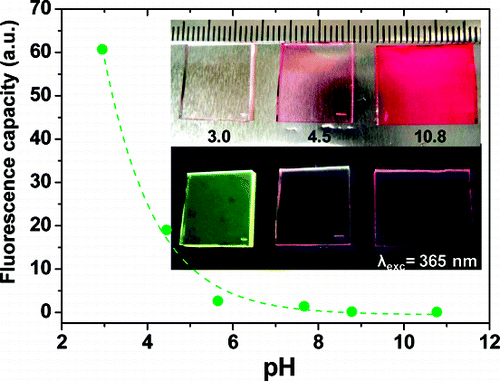J.R. Sánchez-Valencia, I. Blaszczyk-Lezak, J.P. Espinós, S. Hamad, A.R. González-Elipe, A. Barranco
Langmuir, 25 (2009) 9140-9148
doi: 10.1021/la900695t

Rhodamine 6G (Rh6G) dye molecules have been incorporated into transparent and porous SiO2thin films prepared by evaporation at glancing angles. The porosity of these films has been assessed by analyzing their water adsorption isotherms measured for the films deposited on a quartz crystal monitor. Composite Rh6G/SiO2 thin films were prepared by immersion of a SiO2 thin film into a solution of the dye at a given pH. It is found that the amount of Rh6G molecules incorporated into the film is directly dependent on the pH of the solution and can be accounted for by a model based on the point of zero charge (PZC) concepts originally developed for colloidal oxides. At low pHs, the dye molecules incorporate in the form of monomers, while dimers or higher aggregates are formed if the pH increases. Depending on the actual preparation and treatment conditions, they also exhibit high relative fluorescence efficiency. The thermal stability of the composite films has been also investigated by characterizing their optical behavior after heating in an Ar atmosphere at increasing temperatures up to 275 °C. Heating induces a progressive loss of active dye molecules, a change in their agglomeration state, and an increment in their relative fluorescence efficiency. The obtained Rh6G/SiO2 composite thin films did not disperse the light and therefore can be used for integration into optical and photonic devices.

